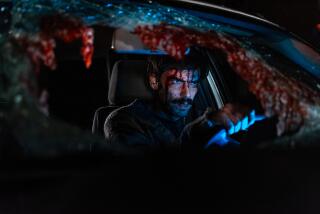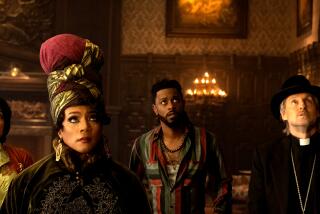‘Amityville’ remake has superior horrors
- Share via
On Nov. 13, 1974, a young man named Ronald DeFeo Jr. went berserk in the middle of the night and shot dead his parents and four younger siblings in their Dutch Colonial home in the peaceful Long Island community of Amityville. A year later a young couple, George and Kathy Lutz, and their three children moved into the house only to flee it 28 days later, never to return, even to collect their possessions. What happened to the Lutzes in that 28 days was turned into a bestselling book, “The Amityville Horror,” by Jay Anson, which spawned a popular picture of the same name in 1979, which in turn led to two sequels.
“The Amityville Horror” has now been remade, and it is decidedly superior to the original. Directed by Andrew Douglas, a commercials veteran, the film is a terrific scare show, fast and furious, made with a lot of style and energy, packing plenty of jolts yet never lingering morbidly over horrific images. It is anchored in strong characterizations, and its plot develops with chilling psychological suspense. It’s such a skillfully made entertainment that its plunge into the supernatural is persuasive even for the skeptical. Some words of warning are in order: The film is unsuitable for children.
Working from Anson’s book as well as Sandor Stern’s script for the 1979 version, writer Scott Kosar sets up the story with care. George Lutz (Ryan Reynolds) is a new husband and stepfather to the three children of his wife, Kathy (Melissa George). They are a loving couple, and George is eager to make a good husband and stepfather. He connects easily enough with little Chelsea (Chloe Grace Moretz) and Michael (Jimmy Bennett) but realizes that 12-year-old Billy (Jesse James) will be a challenge.
When George and Kathy come upon a large seaside Victorian on a huge forest-like lot, a rundown but splendid example of the Dutch Colonial Revival style, they find it hard to resist. No fool, George asks the real estate agent how the price could be so low, and she is forthright about the DeFeo family tragedy. Because George is a contractor able to fix up the place himself, and Kathy is so taken with it, they decide it’s a unique opportunity. “People kill people; houses don’t kill people,” says George firmly, determined to put the house’s dark past behind him and his family.
Had George and Kathy done some poking around in the local library about the house, they would have surely thought more than twice about buying the place. In no time the Lutzes’ dream turns into a nightmare, and what’s in store for them is unspeakably worse than things merely going bump in the night.
Horror pictures can be a real workout for actors, especially young ones, and “Amityville” makes heavy demands on its five principals. Reynolds depicts rigorously Lutz’s descent from a loving family man into a lethally possessed creature, and George shows Kathy as a woman struggling in the face of escalating terror. Douglas clearly took extraordinary pains to ensure that his child actors felt secure while creating hair-raising events surrounding them. Rachel Nichols adds a moment of comic relief as a sexy, irresponsible baby sitter, and Philip Baker Hall plays a local priest overwhelmed by the horrendous happenings at the Dutch Colonial.
The house is the film’s central character, its steep roofs, soaring staircase and dank basement providing wonderfully moody and atmospheric settings for dynamic cinematographer Peter Lyons Collister, who heads the film’s substantial list of skilled artists and craftsmen. With visual panache and consistent dexterity, “The Amityville Horror” confronts a completely normal, likable young family with a glimpse of hell.
*
‘The Amityville Horror’
MPAA rating: Rated R for violence, disturbing images, sexuality, language and brief drug use.
Times guidelines: Brief but extreme violence, unsuitable for children.
An MGM and Dimension Films presentation. Director Andrew Douglas. Producers Michael Bay, Andrew Form, Brad Fuller. Executive producers Ted Field, David Crockett. Screenplay by Scott Kosar; based on a screenplay by Sandor Stern, based on the book by Jay Anson. Cinematographer Peter Lyons Collister. Editors Christian Wagner, Roger Barton. Music Steve Jablonsky. Production designer Jennifer Williams. Special make-up effects designed and created by Greg Nicotero and Howard Berger. Visual effects by Asylum. Running time: 1 hour, 29 minutes. In general release.
More to Read
Only good movies
Get the Indie Focus newsletter, Mark Olsen's weekly guide to the world of cinema.
You may occasionally receive promotional content from the Los Angeles Times.








